CPM Machine ( Continuous Passive Motion Machine)
Table of Contents
What is a continuous passive motion machine?
- A continuous passive movement(CPM) machine is a motorized instrument that passively moves a joint through a pre-set range of movement.
- This CPM machine may be used post-operatively to minimize joint stiffness and improve joint movement (Range of Motion).
- Continuous passive movement (CPM) is a treatment in which a machine is used to move a joint without the patient having to exert any work.
- Continuous passive motion machine (CPM Machine ), in contrast to disconnected passive movement, is a movement that is constant for long periods of time.
- It is normally applied by a mechanical wanted joint persistently through a controlled range of development without patient exertion for up to 24 hours per day for at least 7 progressive days.
- The movement is passive so that muscle fatigue doses are not restricted by the movement.
- A machine is used because an individual would not be able to apply the controlled movement continuously for the enlarge periods of time.
- The CPM Machine treatment technique is based on the research protocols developed by Robert Salter.
Definition :
- CPM Machine is slowly and continuously passive movement performed by mechanical procedure through a controlled ROM without patient work.
General Principles :
- The CPM unit is often applied in the recovery room immediately after surgery even when the patient is wearing a brace or surgical bandages.
- The arc of movement for the joint is determined.
- Often a low arc of 20to30 degrees is used initially end progressed to 10 to 15 degrees per day.
- The rate of movement is usually 1 cycle per 45 sec. or 2 minutes.
- Physiotherapy treatment is provided during the time the patient is not on the CPM machine.
- The duration minimum for CPM is usually less than one week then a satisfactory ROM is reached.
Where Continuous passive motion machine works ?
- Recovering normal joint mobility can be a significant challenge.
- The firmness of a joint can be a complication that limits the conclusion and causes pain.
- Because of this, some surgeons use CPM to try to prevent scar tissue formation and improve the movement of joints.
- It may be recommended after techniques like ACL reconstruction or frozen shoulder surgery, but CPM is most likely to be prescribed after knee replacement or knee cartilage repair surgery.
- It may also be used after surgery to remove knee lumps in children with osteosarcoma.
- Deep venous thrombosis is another chance after knee surgery.
- CPM may help reduce the risk of DVT after knee surgery, although the evidence is not definitive.
- Alternatives to using CPM include physiotherapy and active mobilization.
Indications :
- Knee joint replacement
- Fracture
- Arthritis
- Hip surgery
- Ligament surgery
Contraindication :
- Unstable fracture
- Muscle rigidity
- Manic phase
- Epileptic seizures
- Unstable vital signs
- Fever / Sweating
Continuous passive motion machine complications :
If Overuse of a CPM Machine may cause joint pain and swelling over the joint. if you increase motion speedily may also be chances of injury to a ligament or muscle strain. Gradual increase of motion is highly recommended.
How long should you use a CPM machine?
Generally, the use of 5 to 6 hours within 24 hours of a CPM Machine is the best option with 2 hours intervals. As per research, 3 types of research were done on CPM Machines where 3 to 4 hours use within 24 hours, 5 to 6 hours, and 10 to 12 hours within 24 hours are applied where Best results were found on 5 to 6 hours with 2 hours gap is the best option.
You will use the CPM machine for approximately 2 weeks up to 6 weeks depending upon improving the pattern and stiffness of the joint, sometimes longer periods are also used.
Use of CPM machine :
- CPM machines are most commonly used after knee joint surgery.
- CPM machines are also used to treat the hip, shoulder, and elbow joints.
- CPM machines are used before removing the shoulder or knee immobilizer.
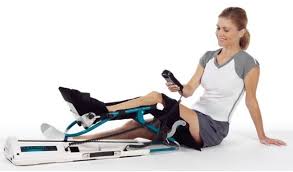
Continuous passive motion machine for the knee :
Passive knee movement machine after knee joint replacement surgery OR another Post operative knee joint surgery or Immobilization of knee joint :
- If using a CPM machine for your knee, place your leg so that the middle of your knee rests where the CPM machine bends, and the bottom of your foot is against the foot pad.
- If using a CPM machine for your shoulder, place your elbow so that it rests where the CPM bends.
- Place your hand around the hand grip.
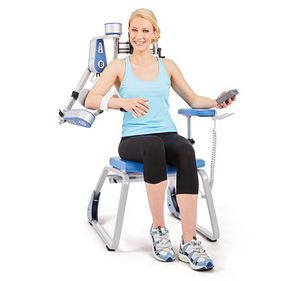
Continuous passive motion machine for shoulder :
CPM machine after shoulder joint surgery :
- Many patients may experience shoulder stiffness after surgery such as rotator cuff repairs.
- The CPM machine moves the shoulder joint for a set time, gently, through a ROM set on the instrument.
- The movement produces the formation of scar tissue, helps improve circulation, and builds the muscles around the joint.
- The surgeon may advise CPM machine therapy along with physiotherapy to improve outcomes, especially after surgery is done to remove scar tissue from the shoulder.
- The CPM machine moves light to allow the soft tissue structures to heal and thereby maintaining the integrity of the surgical shoulder repair.
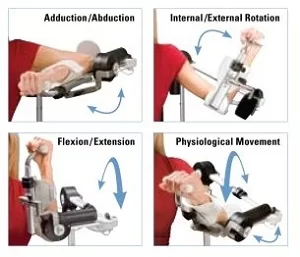
CPM machine after elbow joint surgery :
- Surgical contracture release can restore motion to a stiff elbow.
- Some authors suggest that the use of continuous passive movement (CPM) in postoperative management can increase ultimately movement.
- This study tests the null theory that there is no difference in the arc of flexion and extension between patients who used CPM and those who did not use CPM after open elbow contracture release.
Benefits of CPM :
- Reduce the negative effects of joint immobilization.
- Preventing the development of adhesion, contracture, and joint stiffness.
- Providing a stimulating effect on the healing of tendons and ligaments.
- CPM machines only move your joint, not move your muscles.
- Minimizing the effect of the immobilization.
- Increasing the synovial fluid of the joint so increases the rate of intra – articular healing.
- It’s thought they help by counteracting the negative effects of prolonged immobilization.
- The range of motion (ROM) of your arm or leg will increase.
- The CPM machine will flex (bend) your joint for you.
- Decrease post-operative pain.
- You may have increased blood flow in your arm or leg.
- Improve recovery rate and ROM following surgical procedures.
- Enhance the nutritional status of the extremity by improving circulation through a continuous pumping action.
CPM has been following Benefits :
- Prevent the development of stiffness and decrease contracture evolution.
- Reduce postoperative pain.
- Increase the nutritional status of the extremity by improving circulation through a continuous pumping action.
- Reduce joint effusion and wound edema, thus improving wound healing.
- Produce the rate of intraarticular cartilage healing and regeneration.
- Provide a quicker return of the provide joint movement.
Advantages of CPM :
- The range of movement (ROM) of your arm or leg will increase.
- The CPM machine will bend your joint for you.
- Your muscles may get stronger more quickly.
- You may have less pain.
- Blood flow in your arm or leg should be increased.
Disadvantages of CPM :
- Hip joint rehabilitation in the field allows no ideal movement of the hip joint.
- Abduction and adduction of the hip are not possible.
Precautions :
- The use of CPM in conjunction with anti-coagulation therapy may produce an intra – compartmental hematoma.
- Skin impatience from the bands or carriage cover may develop.
How to use a continuous passive motion machine?
Procedure :
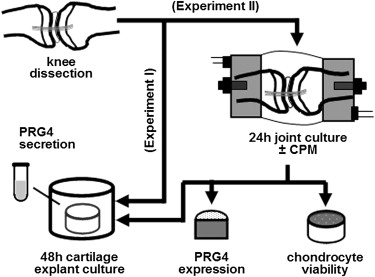
- Note: A variety of treatments have been developed based on individual surgeons’ experience.
- Surgical techniques or diseases are required to modify the range, time, and duration of the CPM procedure.
- CPM machine may be applied to the involved limb immediately after surgery while the patient is still under anesthesia or, at least, within 3 days after surgery if bulky dressing prevents early movement.
- The size and position of the movement arc for the joint is determined.
- A low arc of 20 to 30 degrees may be used instantly after surgery.
- The degree is re-adjusted day to day or at an appropriate time interval to progress the pt.’s range as allowed.
- The rate of movement is determined, usually, 1 cycle per minute or per 2 minutes is well allowed.
The number of times on the CPM machine may vary for different treatments:
- Wherever from continuous for 24 hours to continuous for 1 hour three times a day.
- The longer periods of time per day evidently result in a shorter hospital stay, fewer postoperative complications, and greater ROM at discharge.
- Exercise programs are initiated during periods when the patient is not on a CPM machine, as well as active-assistive or sling exercises.
- The duration minimum is usually 1 week or when a satisfactory ROM is in progress.
- A Physiotherapy treatment program of active exercises is continued until the patient attains appropriate ADL activity.
Equipment :
- Several different companies now manufacture CPM machines.
- CPM machines are adjustable, easily controlled, versatile, and portable.
- Some power is operated to allow the individual to wear the instrument for up to 8 hours while functioning with ADL activities.
- The power is then recharged while the person sleeps.
- CPM instruments have been developed for just about every surrounding joint.
Continuous passive motion machine price :
CPM machines usually prize go up to $2,000 to buy, but in most cases renting a machine is a less expensive option. According to one CPM rental company, the rental price starts at $80 to $120 for weeks with an extra $100 for each week after. Prices are variable in each country
Continuous passive motion machine price in India :
CPM Machine price in India is variable from 10,000 INR to 20, 000 INR. The CPM Machine rental option is also available and less expensive. Rental of CPM Machine mostly varies from 80 to up to 150 INR.
continuous passive motion machine manufacturer

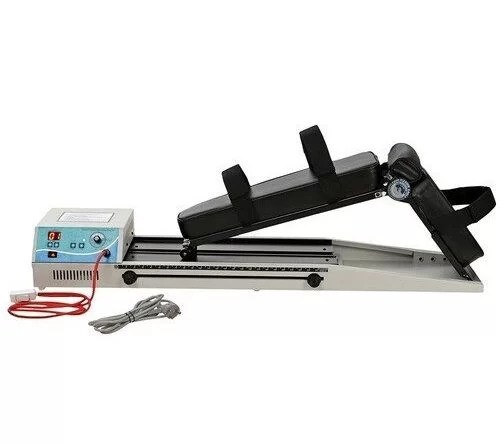
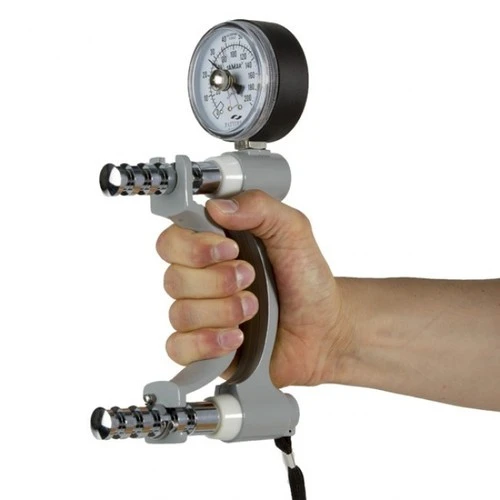
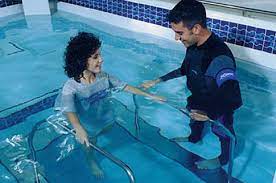
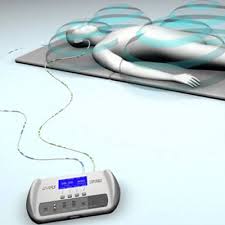


2 Comments